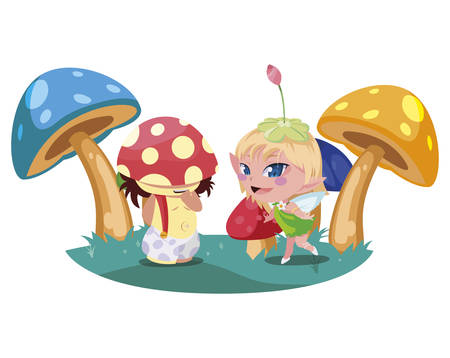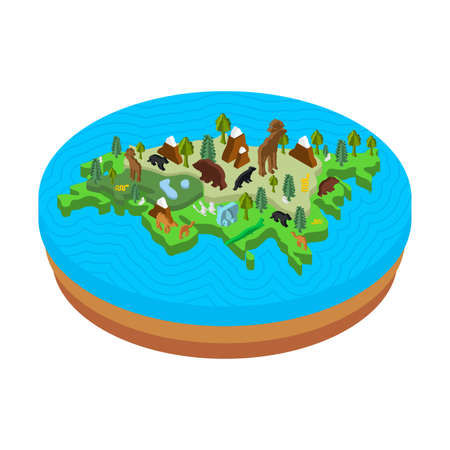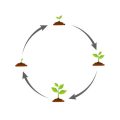Introduction: Benefits of Natural Pest Control
When it comes to maintaining a healthy and thriving British garden, the importance of natural pest control cannot be overstated. Encouraging native wildlife such as hedgehogs and frogs not only supports local biodiversity but also offers an effective and sustainable approach to managing common garden pests. Unlike chemical solutions that can disrupt the delicate balance of your garden ecosystem, inviting these helpful creatures into your green space promotes a more resilient environment. Hedgehogs and frogs are natural predators of slugs, snails, and other insects that often damage plants, providing gardeners with a practical way to reduce unwanted pests while supporting wildlife conservation efforts. By fostering habitats for these charming animals, you contribute to the overall health of your garden and play a vital role in preserving the rich biodiversity that defines British landscapes.
2. Understanding the Role of Hedgehogs and Frogs
In British gardens, hedgehogs and frogs are not merely charming visitors; they play a crucial role as natural pest controllers. Their diet and behaviour make them highly effective at keeping some of the most troublesome garden pests in check. Understanding how these species contribute to a balanced garden ecosystem is key to maximising their benefits.
The Pest Control Expertise of Hedgehogs
Hedgehogs are primarily nocturnal insectivores, meaning their nightly foraging helps reduce pest populations while you sleep. They consume a wide range of invertebrates commonly found in UK gardens, including slugs, beetles, caterpillars, and earwigs. Slugs, notorious for damaging young shoots and seedlings, are a particular favourite. By naturally reducing slug numbers, hedgehogs can help preserve your prized hostas and vegetables without the need for chemical slug pellets.
Frogs: Allies Against Insects
Frogs, meanwhile, are indispensable allies in controlling flying and ground-dwelling insects. They feed on flies, mosquitoes, aphids, and other small creatures that can wreak havoc on British garden plants. Their presence is especially beneficial near ponds or damp areas where insect larvae thrive. As adult frogs consume hundreds of insects each week during the warmer months, their impact on pest reduction is significant.
Typical British Garden Pests Managed by Hedgehogs and Frogs
| Pest Species | Affected Plants/Crops | Main Predator |
|---|---|---|
| Slugs & Snails | Lettuce, hostas, strawberries | Hedgehog |
| Caterpillars | Cabbage, brassicas, fruit trees | Hedgehog |
| Beetles & Earwigs | Dahlias, roses, soft fruits | Hedgehog |
| Mosquitoes & Flies | N/A (nuisance and disease vector) | Frog |
| Aphids & Small Insects | Roses, beans, peas | Frog |
The Environmental Context: Supporting Biodiversity in the UK
The British climate—with its mild temperatures and regular rainfall—provides ideal conditions for both pests and their natural predators. Encouraging hedgehogs and frogs contributes not only to pest management but also supports wider biodiversity within your garden. This holistic approach aligns with contemporary environmental values across the UK: fostering habitats that sustain wildlife while reducing reliance on artificial pesticides.

3. Creating a Wildlife-Friendly Habitat
Transforming your British garden into a haven for hedgehogs and frogs begins with thoughtful landscaping and gardening techniques that cater to their specific needs. Start by incorporating a variety of native plants, shrubs, and ground cover to provide shelter, food, and safe passage. Dense hedgerows, log piles, and leaf litter create ideal hiding spots for hedgehogs, while ponds or shallow water features are essential for attracting frogs.
Practical Garden Design Tips
When planning your garden layout, consider leaving some areas slightly untidy—hedgehogs thrive in gardens with wild corners where they can forage undisturbed. Installing a ‘hedgehog highway’—small gaps (about 13cm square) at the base of fences—allows these nocturnal visitors to roam freely between gardens. For frogs, avoid using steep-sided ponds; instead, ensure gentle slopes or stones for easy access in and out of the water.
Choosing the Right Plants
Opt for native British species such as hawthorn, dog rose, and bramble to attract insects that both hedgehogs and frogs feed on. Water-loving plants like marsh marigold or iris will not only beautify your pond but also offer shelter for amphibians. Avoid chemical pesticides and slug pellets, as these can harm both hedgehogs and frogs—natural pest control is the goal here.
Sustainable Maintenance Practices
Regularly check for hazards such as netting or open drains that could trap small wildlife. Compost heaps are fantastic for providing warmth during colder months, but always inspect them before turning. Embrace a more relaxed mowing schedule to encourage insects, which are vital food sources for both hedgehogs and frogs. By making these simple adjustments tailored to the British climate and wildlife, you’ll support thriving populations of nature’s best pest controllers right in your own back garden.
4. Seasonal Considerations for British Gardens
Supporting hedgehogs and frogs in your British garden means understanding the distinct seasonal shifts and tailoring your approach throughout the year. Both animals have unique requirements depending on the time of year, and your interventions can make a significant difference to their wellbeing and effectiveness as natural pest controllers.
Spring: Awakening and Breeding
As temperatures rise, hedgehogs emerge from hibernation and frogs return to ponds to spawn. Ensure there is access to fresh water, ample cover, and safe passageways free from obstructions like netting or deep steps. Avoid disturbing compost heaps and leaf piles where animals may still be sheltering.
Summer: Activity Peaks
This is when both species are most active in controlling pests. Provide shady retreats and keep water sources topped up during dry spells. Long grass, log piles, and dense borders offer essential daytime cover. Reduce pesticide use to protect their food supply.
Autumn: Preparation for Hibernation
Hedgehogs build nests and frogs seek out frost-free shelters. Leave some areas untidy—leaf litter, brushwood, or a purpose-built hedgehog home all help. Avoid excessive tidying which removes vital materials for nesting or overwintering sites.
Winter: Hibernation Support
Disturbance should be kept to a minimum as both animals rest through cold months. Check bonfires before lighting and leave undisturbed corners with thick vegetation or log piles. If possible, provide shallow ponds that won’t freeze completely, allowing frogs access to oxygenated water beneath the ice.
Seasonal Care Quick Reference Table
| Season | Key Actions for Hedgehogs | Key Actions for Frogs |
|---|---|---|
| Spring | Open access routes; fresh water; gentle garden clearance | Pond maintenance; protect spawn; avoid disturbance |
| Summer | Shady spots; reduce chemicals; provide food/water | Damp refuges; maintain pond levels; no pesticides |
| Autumn | Nesting materials; leave leaf litter/logs; minimal tidy-up | Create frost-free shelters; retain cover near ponds |
| Winter | No disturbance; check bonfires; insulated nest boxes | No pond freezing; undisturbed log/rock piles |
Adapting to Regional Variations Across the UK
The UK’s climate varies from north to south and east to west. In colder regions such as Scotland or northern England, extend autumn preparations into late summer to accommodate earlier frosts. In milder southern gardens, monitor for early activity in spring and ensure water sources are reliable during prolonged dry spells. By aligning your gardening calendar with local weather patterns, you’ll give hedgehogs and frogs the best chance to thrive—and maximise their natural pest control benefits year-round.
5. Responsible Practices: Avoiding Threats to Native Wildlife
While hedgehogs and frogs are invaluable allies in the British garden, it’s vital to recognise and address the common hazards that can threaten their wellbeing. Ensuring your outdoor space is a safe haven for these native species involves more than simply inviting them in—it requires mindful choices about gardening materials, features, and maintenance routines.
Chemical Use: The Hidden Danger
Many traditional garden treatments—such as slug pellets, pesticides, and weedkillers—pose significant risks to hedgehogs and frogs. These animals often consume contaminated insects or absorb toxins through their skin, which can lead to illness or even death. Instead, opt for natural pest control methods, such as manual removal of slugs or encouraging predatory insects. If you must use chemicals, select wildlife-friendly products and apply them sparingly, always following label instructions carefully.
Ponds: Lifelines with Risks
Ponds are essential habitats for frogs and can also provide drinking water for hedgehogs. However, steep-sided ponds may trap small creatures who cannot escape. To mitigate this risk, ensure your pond has gently sloping sides or install a ramp or pile of stones at the water’s edge to create an easy exit route. Regularly check pond netting, which is intended to keep debris out but can entangle both frogs and hedgehogs. Choose wildlife-safe netting or consider removing it altogether during peak activity seasons.
Netting and Fencing Hazards
Loose netting used for protecting fruit or vegetables is another common danger in British gardens. Hedgehogs can become ensnared while searching for food at night. Always secure netting tightly above ground level (at least 20cm) or use solid barriers where possible. Similarly, solid fences without gaps restrict the movement of hedgehogs—adding small openings (13cm x 13cm) at the base allows them to travel safely between gardens, supporting both individual survival and broader population health.
Additional Precautions
Other hazards include sharp tools left on the ground, open drains, and bonfires built on piles where hedgehogs may be sheltering. Conduct a quick check before starting garden work or lighting fires. By implementing these responsible practices, you’ll create a garden that welcomes hedgehogs and frogs while keeping them safe from everyday threats.
6. Community Efforts and Citizen Science
Supporting hedgehogs and frogs in your British garden extends beyond individual action—it thrives on community collaboration and citizen science initiatives. By joining local conservation groups or volunteering at wildlife trusts, you can help create wider habitats, share resources, and raise awareness about the importance of these species as natural pest controllers. Participating in community gardens offers a chance to build wildlife-friendly spaces collectively, where diverse plantings and water features benefit both amphibians and small mammals.
Getting Involved Locally
Engage with local councils, nature reserves, or neighbourhood gardening clubs that champion wildlife-friendly practices. Many British towns have “Hedgehog Streets” schemes or pond-building workshops aimed at increasing habitats for native species. Attending talks, open days, or seasonal surveys organised by groups like The Wildlife Trusts or Froglife provides hands-on learning and strengthens community ties around biodiversity goals.
Citizen Science Opportunities
Contributing to national wildlife surveys is a practical way to make a difference from your own garden. Programmes such as the Big Hedgehog Map, FrogWatch, or the Garden Wildlife Health project invite citizens to log sightings, breeding activity, and health observations. This data is invaluable for tracking population trends and identifying threats, guiding future conservation policy across the UK.
The Benefits of Collective Action
When individuals unite through community efforts, the impact on local ecosystems multiplies. Shared knowledge leads to better habitat connectivity—essential for creatures like hedgehogs that roam between gardens—and encourages widespread adoption of wildlife-friendly gardening techniques. Together, we can ensure that British gardens remain vibrant sanctuaries for hedgehogs, frogs, and other beneficial creatures—naturally enhancing pest control while celebrating our shared natural heritage.
Conclusion: The Lasting Value of Natural Pest Controllers
Welcoming hedgehogs and frogs into your British garden is far more than a charming tradition; it is a pragmatic and ecologically sound approach to managing pests. These native species are invaluable allies, providing effective, chemical-free pest control that safeguards both plant health and local biodiversity. By fostering habitats and eliminating harmful pesticides, we empower nature’s own guardians to flourish. This not only reduces reliance on synthetic solutions but also enriches the garden’s ecosystem, supporting pollinators and other wildlife.
Embracing wildlife-friendly gardening reflects the very heart of British horticultural culture—a deep respect for nature and a commitment to sustainability. When you create safe havens for hedgehogs and frogs, you contribute to the preservation of these iconic species and promote a balanced, thriving outdoor space. Let us all champion this harmonious way of gardening, making our gardens sanctuaries for wildlife and models of ecological stewardship for future generations.


